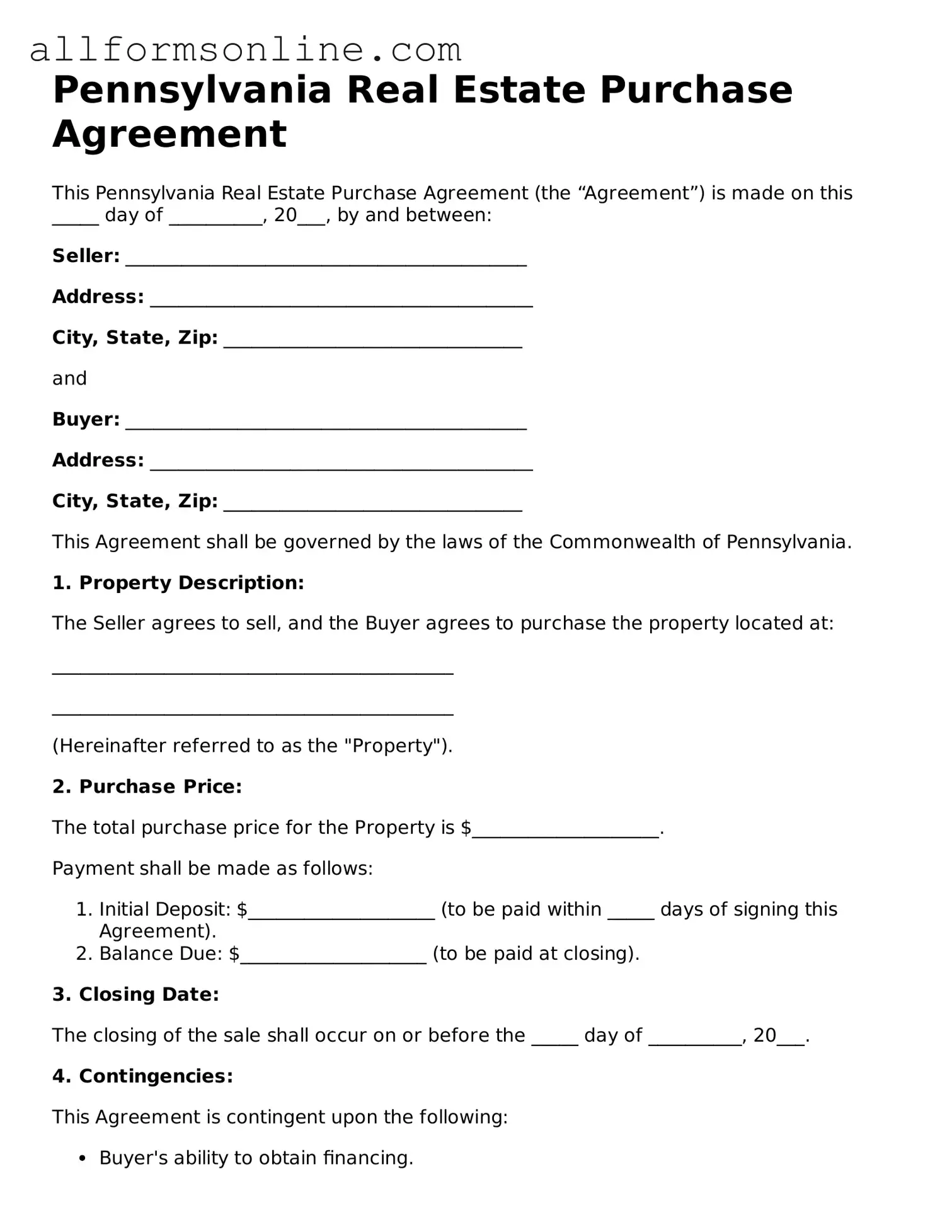What is a Pennsylvania Real Estate Purchase Agreement?
The Pennsylvania Real Estate Purchase Agreement is a legal document that outlines the terms and conditions under which a property is bought and sold in Pennsylvania. This agreement serves as a binding contract between the buyer and seller, detailing important aspects such as the purchase price, closing date, and any contingencies that may apply. It ensures that both parties have a clear understanding of their rights and obligations throughout the transaction process.
What are the key components of the agreement?
Several essential elements make up the Pennsylvania Real Estate Purchase Agreement. These include the identification of the parties involved, a description of the property being sold, the agreed-upon purchase price, and the payment terms. Additionally, the agreement may include contingencies, such as financing or inspection requirements, as well as details about closing costs and the timeline for the transaction.
Is the agreement legally binding?
Yes, once both parties sign the Pennsylvania Real Estate Purchase Agreement, it becomes a legally binding contract. This means that both the buyer and the seller are obligated to fulfill the terms outlined in the agreement. If either party fails to comply, the other party may have legal grounds to seek remedies, which could include enforcing the contract or seeking damages.
Can the agreement be modified after it is signed?
Modifications to the Pennsylvania Real Estate Purchase Agreement can be made, but they typically require the consent of both parties. Any changes should be documented in writing and signed by both the buyer and the seller to ensure that they are enforceable. It’s important to keep communication open and clear when discussing any potential changes to the agreement.
What happens if a buyer wants to back out of the agreement?
If a buyer wishes to back out of the agreement, the consequences depend on the terms laid out in the contract. If the buyer has included contingencies, such as a financing or inspection contingency, they may be able to withdraw without penalty. However, if the buyer simply changes their mind without a valid reason, they could potentially lose their earnest money deposit or face legal action from the seller.
Are there any contingencies that are commonly included?
Yes, several contingencies are often included in the Pennsylvania Real Estate Purchase Agreement. Common ones include financing contingencies, which allow the buyer to back out if they cannot secure a mortgage, and inspection contingencies, which permit the buyer to withdraw if significant issues are discovered during a home inspection. These contingencies protect the buyer's interests and provide an opportunity to negotiate repairs or price adjustments based on findings.
Where can I obtain a Pennsylvania Real Estate Purchase Agreement form?
Pennsylvania Real Estate Purchase Agreement forms can be obtained from various sources. Many real estate agents provide these forms as part of their services. Additionally, legal websites and local real estate associations often offer templates for purchase agreements. It’s advisable to use a form that is up-to-date and complies with current Pennsylvania laws to ensure its validity.
